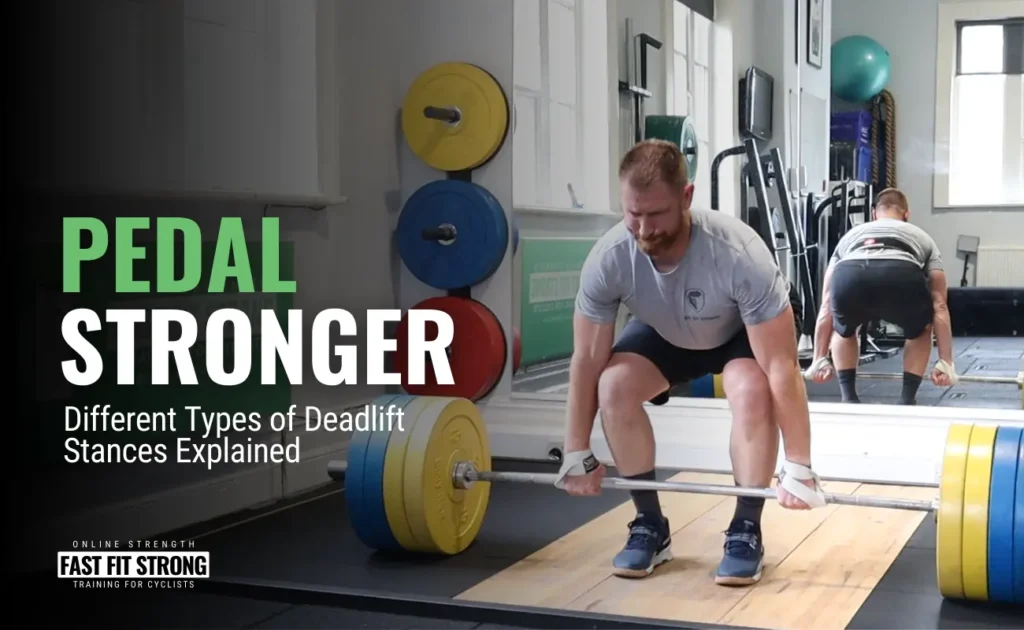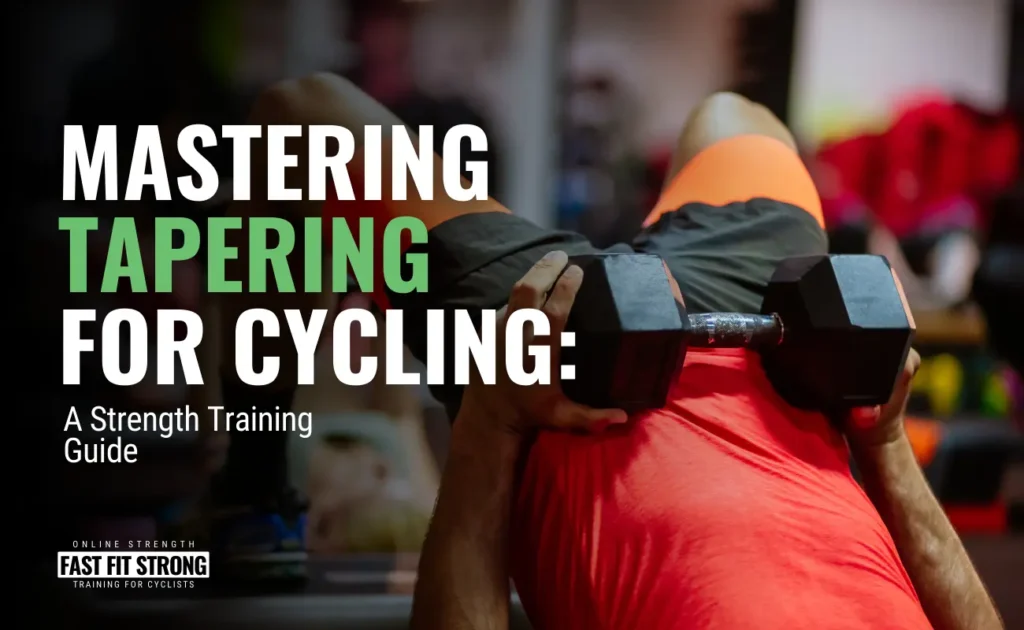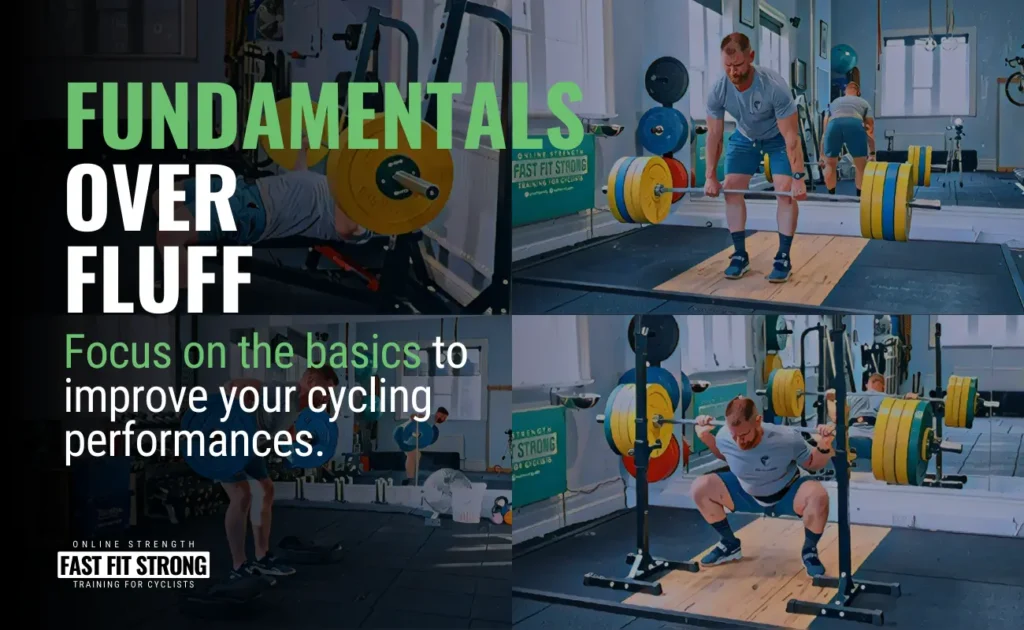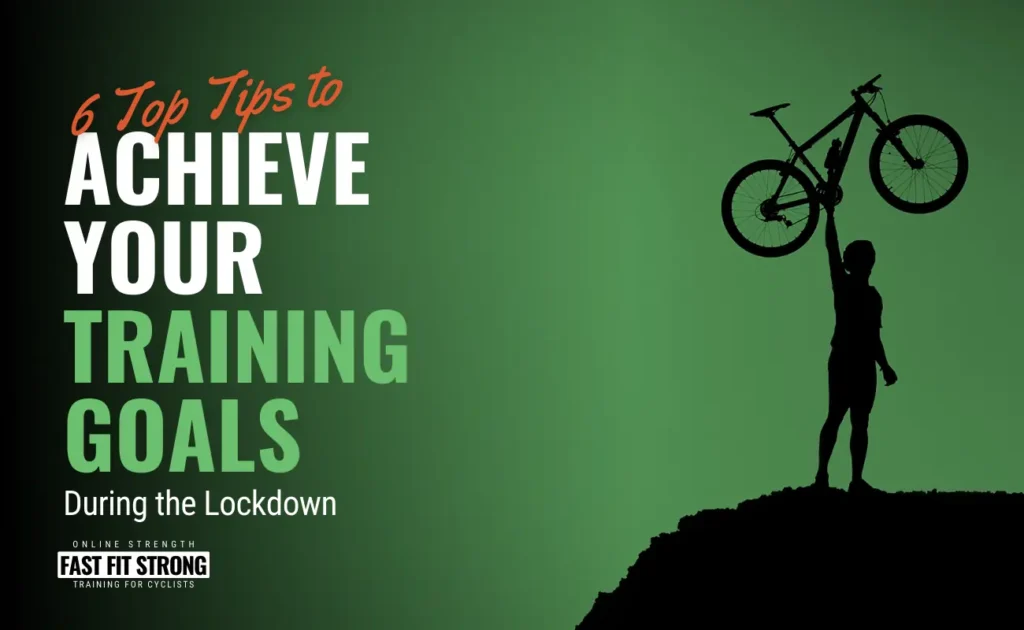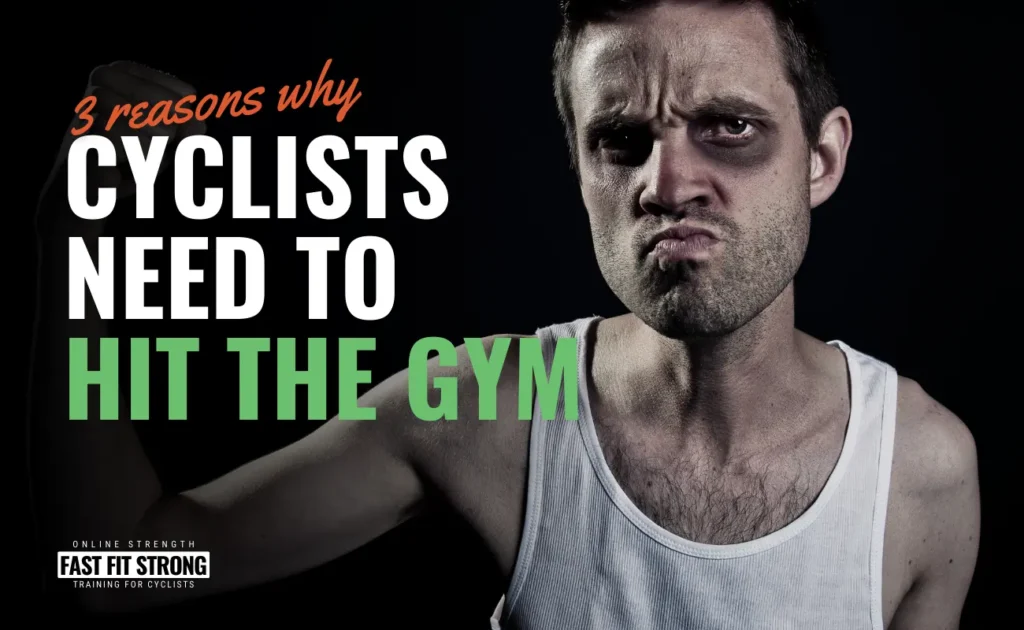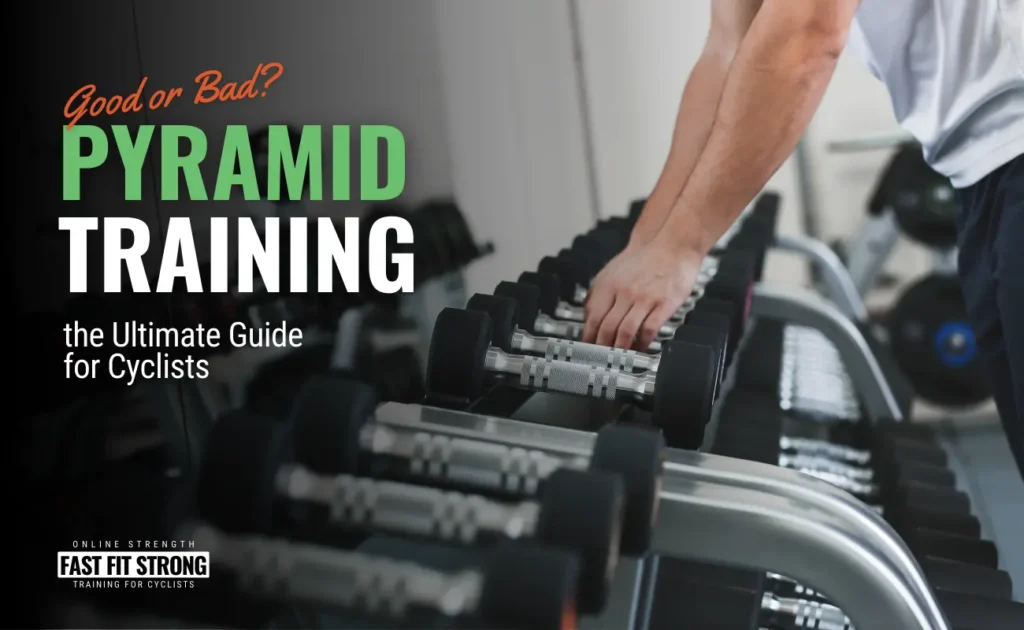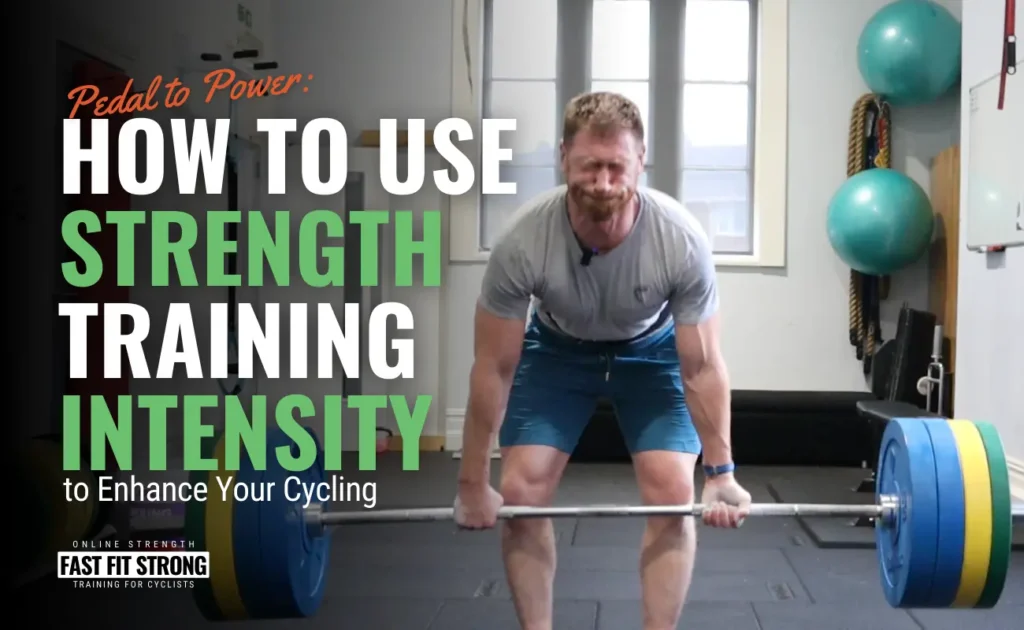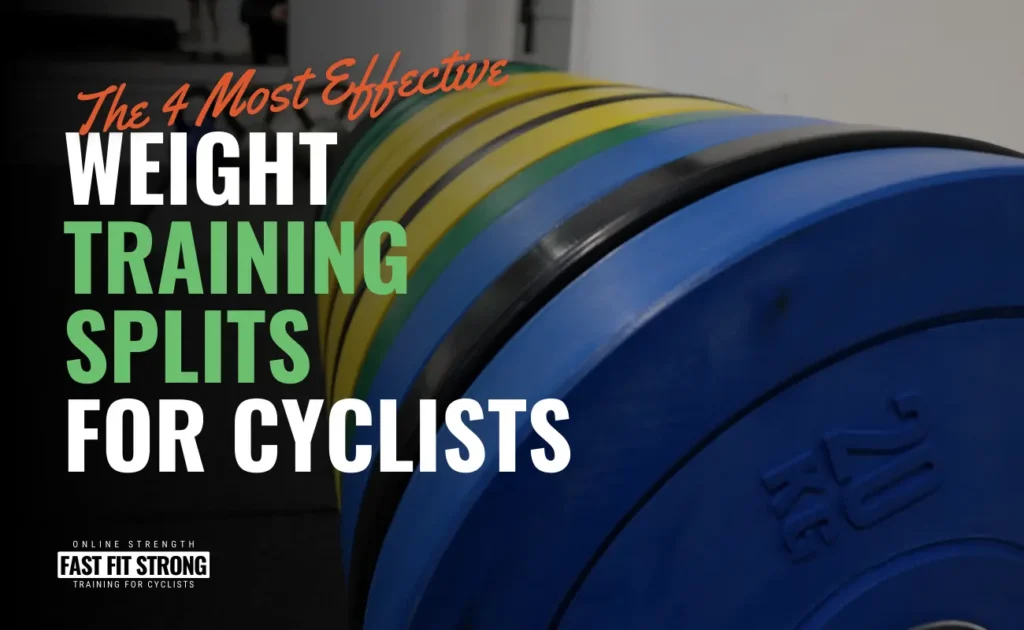Introduction
This is the second part of my two-part series, where I’m debunking many of the strength training misconceptions and myths, especially when you’re training as an endurance athlete.
In part 1 I dispelled the most common strength training myths that stop athletes from starting a strength program in the first place, so hopefully, you’re now sold on the concept and have an understanding of why you need to get in the gym and start lifting.
The open nature of strength training is both an advantage and a curse. There are loads of methods that are either inappropriate for cyclists and/or bad practice in general. This post is about “how” you should train and aims to stop riders doing stupid stuff (like CrossFit and plyometrics) and then complaining that “gym work got them injured”!
#1: No pain, no gain!
Misconception
This comes from the incorrect notion that the soreness you experience after weight training is a good thing. Similar expressions like “sore today, strong tomorrow” also fall into this category. Despite it being a relatively common experience for many athletes, the mechanisms that cause delayed onset muscle soreness (DOMS) are not well understood (10). Symptoms can range from mild tenderness in the muscle, to severe, debilitating pain. As many as six theories have been suggested for the precise mechanism of DOMS, including connective tissue damage, the enzyme efflux, inflammation, lactic acid, muscle damage and muscle spasm, however, it’s likely that several of these contribute to explaining the phenomenon.
DOMS is more common when athletes are introduced to new forms of training; it seems that the change in the stimulus is what drives the soreness rather than the stimulus itself, although intensity and duration are also driving factors. Heavy eccentric loading (7) and blood-flow restricted exercise (11) can cause more severe pain. These factors can negatively affect subsequent athletic performance by reducing peak torque production (i.e. strength) and range of motion. In turn, this alters the athletes’ coordination and movement patterns leading to a higher risk of injury (4). Therefore, athletes may need to modify sessions for 1-2 days following intense DOMS, reducing their effectiveness.
Reality
All new training methods should be introduced gradually and built up over a period of time (3). It’s often useful to feel some very mild tenderness in the 1-2 days after a gym session to let you know which muscles you’ve been working on, but anything more than that is counterproductive. I’ve spent the last 5-years designing programs specifically designed to minimise any soreness (check out my packages here); the enjoyment and success my riders have experienced have allowed them to keep strength training alongside their cycling.
#2: High reps for endurance
Misconception
This comes from a major misunderstanding of the reason why strength training is so important for cyclists (find out more in part one of this article) and is inaccurate for two reasons. Firstly, gym work isn’t aiming to mimic what you do on the bike. It’s there to correct any imbalances you might have, improve your coordination and change the structure of the relevant muscles to be able to produce and accept more force in a shorter period of time. These changes lead to you being more robust, efficient and powerful. Performing many reps with light weights won’t do this.
As my former colleagues, Phil Burt and Martin Evans explain in their (2) book, even if you complete 5 sets of 50 reps (a monster session in anyone’s eyes) it doesn’t equate to anything like what you’ll do on the bike. At 90 rpm, you’ll complete the 250 reps in under 3 minutes (2)! Secondly, to make the physiological changes I’ve just described, you need to apply enough tension to the nervous and muscular systems to force the right kind of adaptations. This means lifting heavy weights. Lower weights stress the body in different ways, so they won’t work.
Reality
Low-weight, high-rep sets are an inefficient wild-goose chase that normally involves rushed reps with poor technique, leading to severe DOMS if not longer-term injuries. Bad idea! Good quality strength programs should look to progressively and safely increase the load to stimulate higher threshold motor units, increasing force production and neural drive.
#3: It’s the Summer; I don’t need to lift any more
Misconception
I get it…you’re a cyclist. Of course, you’d rather be outside riding your bike than in a gym lifting weights. After all, that’s why you do what you do. Even if you’re one of the enlightened few who’ve realised that getting stronger will help you and you’ve done a bit of strength training through the winter, your work isn’t done. It’s not like you can say “I’m strong now, so I don’t need to do anymore”.Unfortunately, once you stop training your body reverts back to homeostasis and studies have shown that losses in strength can be detected in as little as three weeks (5,6,8,9).
In terms of training principles, it’s called the principle of reversibility, so you need to do something to at least maintain what you’ve developed. But this is the paradox. Lifting more, even in the summer months, will allow you to ride more. This doesn’t mean that you need to spend hours in the gym week in, week out, but if you can do something regularly you’ll stand a far better chance of not losing anything.
This is what we did with the British Cycling squads before Rio 2016, even when they were in training camps and leading up to major competitions. What we found was that the riders held on to their strength and experienced far fewer injuries. When they eventually came back into the gym more regularly, they didn’t get the same DOMS, which meant that they rode more often and with much better quality.
Reality
Strength training shouldn’t be on or off, done or not done; it should peak and trough depending on your training goals and the time of the season. Think of it as a graphic equaliser.
#4: Only use “specific” exercises
Misconception
Another principle of training is that of specificity, stating that the body will adapt specifically to the conditions it’s placed under. This has led to some pretty big misunderstandings as to how best to support athletic performance with strength training programs. We’ve all seen the Instagram posts, the so-called fitness guru (usually not wearing very much) performing an untold number of “cycling-specific” exercises, designed to emulate the pedalling action and make you a better rider.
In fairness, this sounds logical and can lead to some fantastic short-term improvements, but in reality, it misses so much, won’t work for very long and will probably get you injured very soon. I’ve personally experienced high-level coaches suggesting to me that perhaps a rider should have their feet placed crank length apart, or that they shouldn’t externally rotate their hips when squatting (because it’s not aerodynamic).
This may appear intuitive and logical, but is in actual fact no benefit whatsoever to the rider and poses a huge risk of injury. Don’t do it! Specificity refers to the specific physical qualities developed by movement and not the mimicking of a specific sporting action (i.e. pedalling). That’s not to say that you should do any major exercise. Clearly, the movements need to be relevant to cycling(1).
Look into the training programs of any long-lasting world-class athlete and you won’t find lists of weird and wonderful exercises, but you’ll see them operating by the 80/20 (Pareto’s) principle. This means that roughly 20% of what they do leads to about 80% of their results. They concentrate on the fundamental movements (not particular exercises) and work on them to get them better and better.
Reality
Exercises are just different ways of applying load across your joints. That’s it! Once you understand this, you will quickly see that one exercise doesn’t possess magical powers and isn’t better than another. Learn the movements and use the subtle differences in particular exercises to get better at that movement. All the programs written by me for my athletes follow these principles; concentrating on squatting, hinging, lunging, pulling and pushing. When the main movement plateaus or breaks down, assistance exercises are used to address particular issues, while supplementary exercises are used to activate particular areas, prevent injuries and reduce imbalances. If you’d like to learn more, contact me here and we can start a conversation.
Conclusion
Strength training provides you with the physical tools to support your riding. It’s not a replacement for hard work on the bike. At the right times, it might be prudent to prioritise gym work and replace some bike sessions, but at other times it’s merely maintenance.
The key is to understand where strength training sits in your training arsenal. If you use it correctly it can be an amazingly powerful tool! The effects of strength training on endurance athletic performance have been the subject of a long debate among athletes, coaches, and sports scientists. The incorporation of strength training in endurance athletes’ preparation has gradually received more attention during the last two decades with studies showing divergent findings.
Some of this discrepancy seems to be related to the mode of strength training. In general, a coach and athlete can employ with confidence concurrent endurance and strength training to improve athletic endurance performance. To optimize the effect of added strength training on cycling performance, athletes should undertake heavy strength training with maximal velocity during the concentric phase should be the training mode to recommend (instead of explosive strength training), while both explosive and heavy strength training with maximal velocity during the concentric phase appears to have an additive effect on running performance.
References
- Beardsley, C., 2015. The muscle activity edition 62.
- Burt, P., Evans, M., 2018. Strength and conditioning for cyclists: off the bike conditioning for performance and life, 1 edition. ed. Bloomsbury Sport.
- Cheung, K., Hume, P.A., Maxwell, L., 2003. Delayed onset muscle soreness: treatment strategies and performance factors. Sports Med. 33, 145–164.
- Connolly, D.A.J., Sayers, S.P., McHugh, M.P., 2003. Treatment and prevention of delayed onset muscle soreness. J. Strength Amp Cond. Res. 17, 197–208.
- Häkkinen, K., Alen, M., Kallinen, M., Newton, R.U., Kraemer, W.J., 2000. Neuromuscular adaptation during prolonged strength training, detraining and re-strength-training in middle-aged and elderly people. Eur. J. Appl. Physiol. 83, 51–62.
- McMaster, D.T., Gill, N.D., Cronin, J.B., McGuigan, M.R., 2013. The development, retention and decay rates of strength and power in elite rugby union, rugby league and american football. Sports Med. 43, 367–384.
- Mike, J., Kerksick, C.M., Kravitz, L., 2015. How to incorporate eccentric training into a resistance training program: Strength Cond. J. 37, 5–17.
- Ogasawara, R., Yasuda, T., Ishii, N., Abe, T., 2012. Comparison of muscle hypertrophy following 6-month of continuous and periodic strength training. Eur. J. Appl. Physiol. 113.
- Ogasawara, R., Yasuda, T., Sakamaki, M., Ozaki, H., Abe, T., 2011. Effects of periodic and continued resistance training on muscle CSA and strength in previously untrained men. Clin. Physiol. Funct. Imaging 31, 399–404.
- Schoenfeld, B.J., Contreras, B., 2013. Is postexercise muscle soreness a valid indicator of muscular adaptations?: Strength Cond. J. 35, 16–21.
- Umbel, J.D., Hoffman, R.L., Dearth, D.J., Chleboun, G.S., Manini, T.M., Clark, B.C., 2009. Delayed-onset muscle soreness induced by low-load blood flow-restricted exercise. Eur. J. Appl. Physiol. 107, 687–695.

